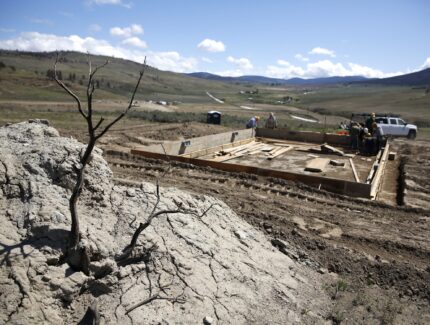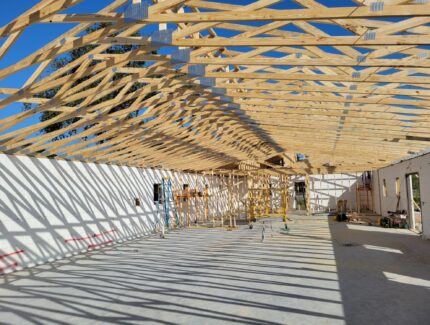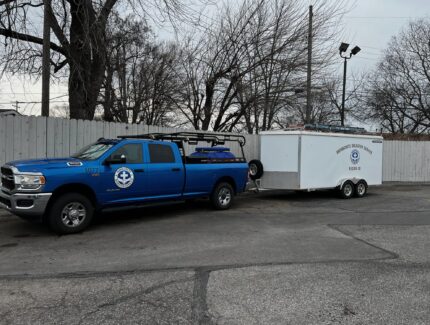


September 19, 2017
Hurricane Harvey Update – From Assessment to Assistance
Bloomington, Tex. — It started with a call from Kevin King, executive director of Mennonite Disaster Service (MDS), asking if I would be able to travel to Texas to be part of an assessment team after Hurricane Harvey.
After watching the storm’s unusual growth to a Category 4 hurricane, 130 mph winds, and then following its landfall and backtracking path, Harvey was destined to be historic in its impact. MDS decided to aggressively investigate the areas impacted by this storm.
I arrived in Austin on Tuesday, August 29, along with the Region 3 Chairperson, Wayne Stuckey. We picked up Kevin King at the airport and headed to the south while Harvey was still drenching Houston to the east with record rainfall of over 50 inches in some areas.
Days 1, 2, and 3 were a blur of broken down power lines, huge debris fields, and towns slowly moving from search and rescue, to early response. We bought gasoline and meals almost every time we saw a working station. Fifteen hundred miles of Texas highways took us as far south as Corpus Christi and as far east as Pasadena on the east side of Houston.
Some miraculous connections with people soon led the team to focus on Victoria County and Aransas Pass. The major areas being covered in the national news broadcasts were being overrun with volunteers. These two areas were at the risk of slipping through the cracks of assistance by recovery groups.
Each area has a high percentage of low income residents and a high number of substandard housing. Although Texas prides itself on its better than average economy, it also is higher than many other states in the number of children living in poverty (nearly 25% of all children and rate twice that of adults) and in families and individuals without health care coverage (rates 50th in health care coverage). A storm as strong as Harvey exposed the poorest of Texans to the worst combination of conditions.
We have now just finished our second week of work in Victoria County, covering the towns of Bloomington and Placedo, as well as some rural areas. Removing damaged and damaging trees was a big part of these efforts and tarping damaged roofs was second. As these two begin to taper off, we are moving to removing damaged ceilings, walls, furniture and floor coverings.
When first walking into some of the homes, it is hard to comprehend that people would live in these structures before the storm. To think that many of the families in the worst houses have no other options after the storm is heart breaking. Many were denied by FEMA of any assistance for a variety of reasons. These included insufficient documentation of ownership, pre-existing conditions, and house numbers that did not match between “911” location maps, tax records, and postal addresses. Without resources to even begin repairs, our efforts are beneficial, but temporary.
In the course of being surrounded by the damage, we have often been blessed in unexpected ways. An anonymous donor provided $1000.00 for wooden boards to secure roof tarps. The contractor desk at Home Depot used their discretionary price powers to increase the number of boards bought by $1000.00 by almost 20%.
A woman who had observed nine MDS workers order meals at a deli cut in line and handed her credit card to the cashier to pay for those meals.
John Cantu in front of his home in Bloomington, Tex. as volunteers tarp his roof.
In the midst of the material aid distribution efforts of First Baptist Church in Bloomington, in spite of their exhaustion, they offered the use of their facility for MDS workers to sleep in fellowship rooms and connect RVs to outside receptacles.
One woman determined she should help in some way, so offered to take the MDS volunteers’ dirty clothes and launder them. She picks them up one morning each week and brings them back by evening, with shirts on hangers and everything smelling beautifully clean.
Perhaps the most striking blessing occurred just this Friday. As we went to our vehicles to start the work day, we found two flats on the big van. Then we determined that three of the four tires on the tool trailer were also flat. All five had knife cuts on the side walls, clear signs of vandalism.
After calling the county commissioner, who provides us names of the most needy, we set about to refocus our day. He posted the story on his Facebook page. Within an hour, he had three offers to pay for all of the damage. Other people gave cash or wrote checks in various amounts. A tire service company redirected a truck to return to the shop, pick up new tires, and head out to replace the tires.
By the time the tires were being remounted, a local person had been chosen to collect the donations and pay the bill. The tire dispatcher said they would have to wait for the invoice until after they applied the discounts the manager had ordered. Well into the afternoon, after the tires had been replaced, people stopped by to say they were sorry and embarrassed this had happened in their town. Some clients who heard of it called to express the same thoughts.
This is an example of MDS being the recipient of an overwhelming show of support. We are blessed to be here.
I have two more weeks before heading home. MDS will continue working for four more weeks after that. What happens next is very much up in the air. MDS would be willing to return for repairs and rebuilding. The key is for some local people to take the lead in raising money and determining who needs help to recover.
On Friday, we felt very much prayed for. Prayers now are needed to request strong local leadership and generous donors. Perhaps most importantly, those prayers need to be for these small, beaten down towns to unite in support of each other. They showed ability in their generous efforts of the material distribution center and the indignation over some slashed tires. Now there needs to be indignation over the conditions in their towns and generosity as they respond and address the needs in their communities.
Pray for Victoria County!
Pray for the MDS volunteers and leaders as they are the hands and feet of Jesus in these towns.
Story by Carl Dube, MDS Victoria County project coordinator
Watch the new MDS video about Hurricane Harvey response.





